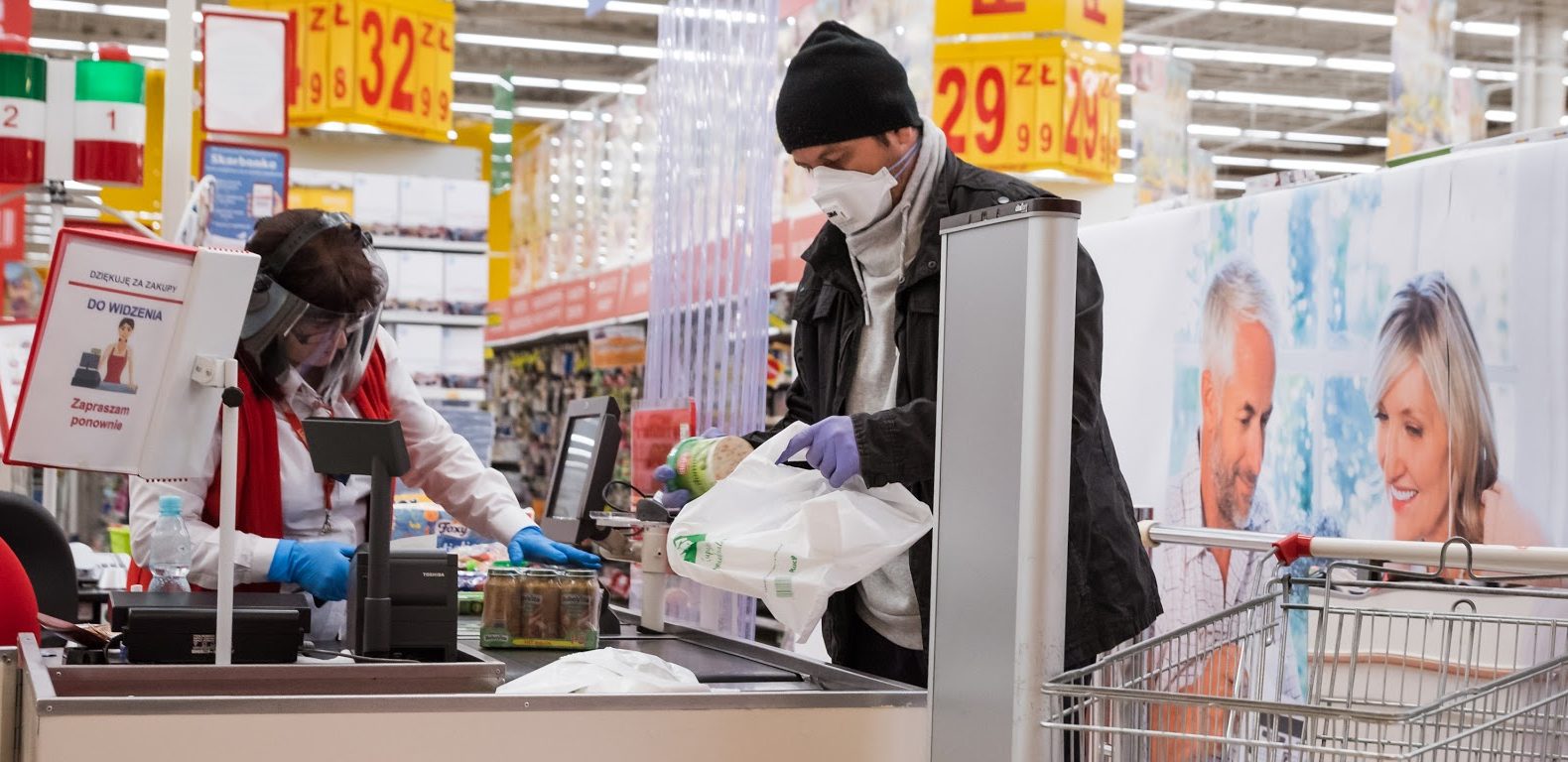
By Julianne Tobin, MS, Dietetic Intern
With all the COVID-19 guidelines for washing hands, physical distancing, and avoiding public places, you may be wondering how this affects your food. Grocery stores are one of the few places we can go, but we are encouraged to shop less frequently, sanitize our hands and grocery carts, and keep at least six feet away from others while in the store. With all of these precautions, you may be curious about the safety of the food you are buying. After all, everything else in our normal routine seems to be different, how should we approach buying and preparing food for ourselves and our families?
According to the CDC, there is no evidence of food or food packaging being associated with the transmission of COVID-19. COVID-19 is a respiratory disease. Unlike gastrointestinal viruses such as norovirus or hepatitis A that make people sick through contaminated foods, there is no evidence that COVID-19 can be transmitted through foodborne exposure.* It is best to practice general food safety guidelines to prevent foodborne illness during times such as these when the healthcare system is already overtaxed (Wadyka 2020). So shop for and enjoy the foods you normally do, and maybe explore some new recipes! But remember to follow food-safety guidelines that are always recommended.
Here are some general food safety guidelines which are always good to follow (FDA 2020):
1. Wash your hands before and after cooking for at least 20 seconds with warm, soapy water. Also, wash your hands during cooking if handling raw meat, poultry, seafood or eggs.
2. Wash cutting boards, utensils, countertops, and dishes after use with warm, soapy water.
3. Rinse fresh produce with running water or use a clean produce brush. Remember, it is not recommended to use soap or diluted bleach as these substances may cause an upset stomach. If the produce is labeled “pre-washed” you do not have to wash it again.
4. With canned goods, rinse the lid before opening to prevent dirt or other contaminants on the outside of the can from getting on the food.
5. Check expiration dates before food preparation. A lot of us are utilizing ingredients we find in the pantry or freezer to stretch our meals. This is a great tactic to limit grocery shopping, but make sure your items are not expired before using them in your next dish!
6. Use one cutting board for fresh produce and a separate cutting board for raw meats, poultry, and fish.
 7. Cook food to a safe internal temperature:
7. Cook food to a safe internal temperature:
-145℉ for fresh pork, beef roasts, steaks, chops, and fish
– 160℉ for eggs and beef
– 165℉ for poultry, ground beef, casseroles, leftovers, and precooked ham
8. Refrigerate perishable foods and leftovers promptly, food should be refrigerated within 2 hours of cooking. Refrigerate and freeze groceries promptly when returning from the store.
9. Never thaw foods at room temperature, safe thawing methods include in the refrigerator, under cold running water or in the microwave
Remember, the FDA and USDA are still working to track foodborne illness and ensure a safe food supply, do your part to follow safe food practices at home!
At the Poe Center, we know the importance of kitchen safety! You can browse our kitchen safety resources detailing topics like proper food storage, handwashing techniques, knife safety and more by clicking here. There are also recipes you may want to explore with your family, cooking is a great way to exercise your creativity and enjoy some family time at home!
*Disclaimer: Information regarding COVID-19 is constantly changing, it is best to check the CDC website for the most up-to-date information.
Works Cited:
Answers to Common Questions About Coronavirus and the Food You Eat.
Coronavirus Disease 2019 (COVID-19) Frequently Asked Questions.
